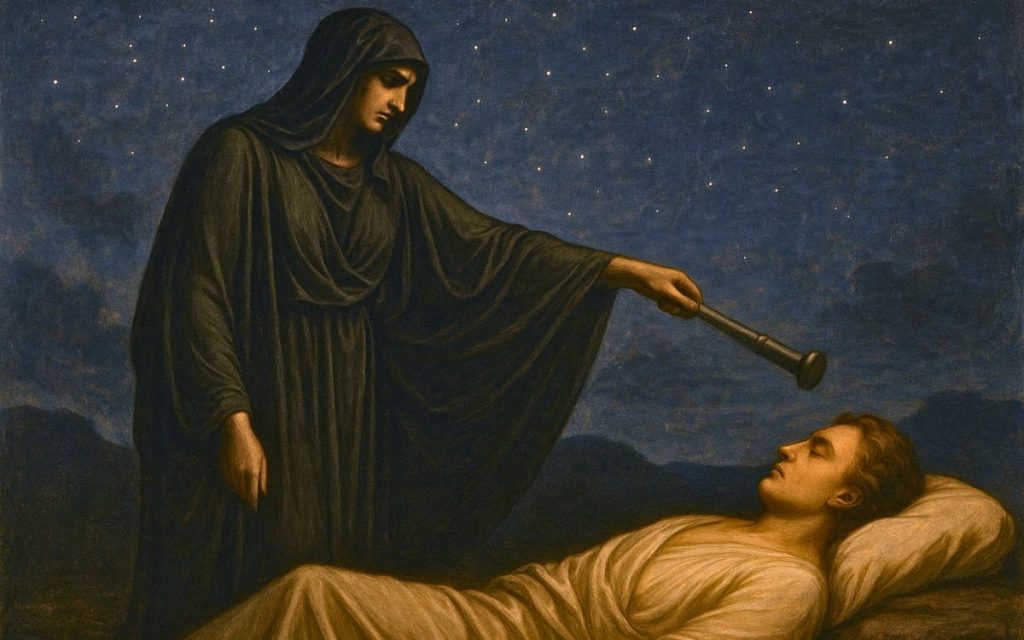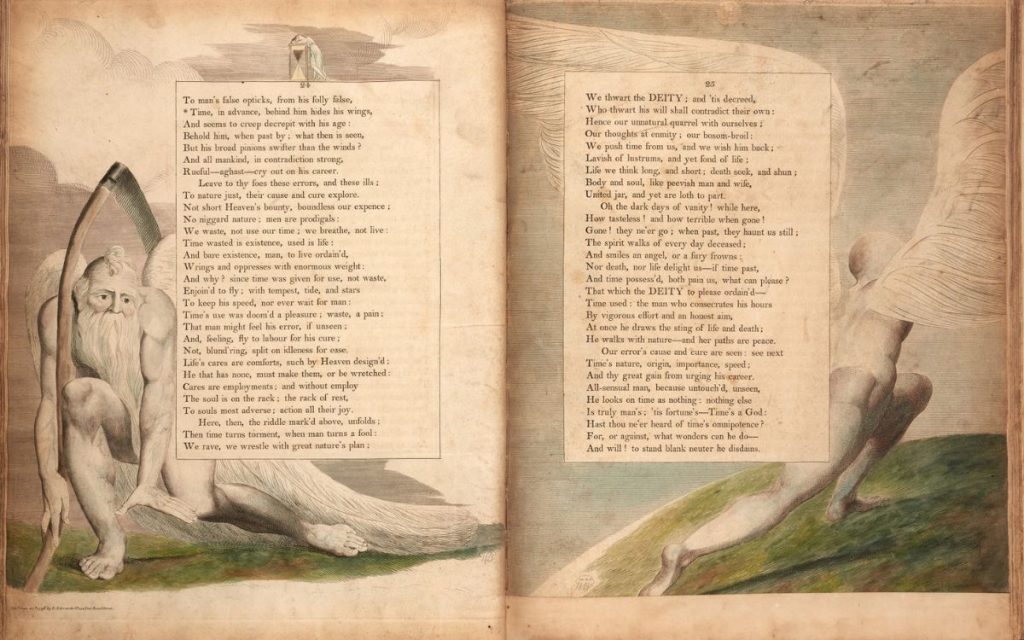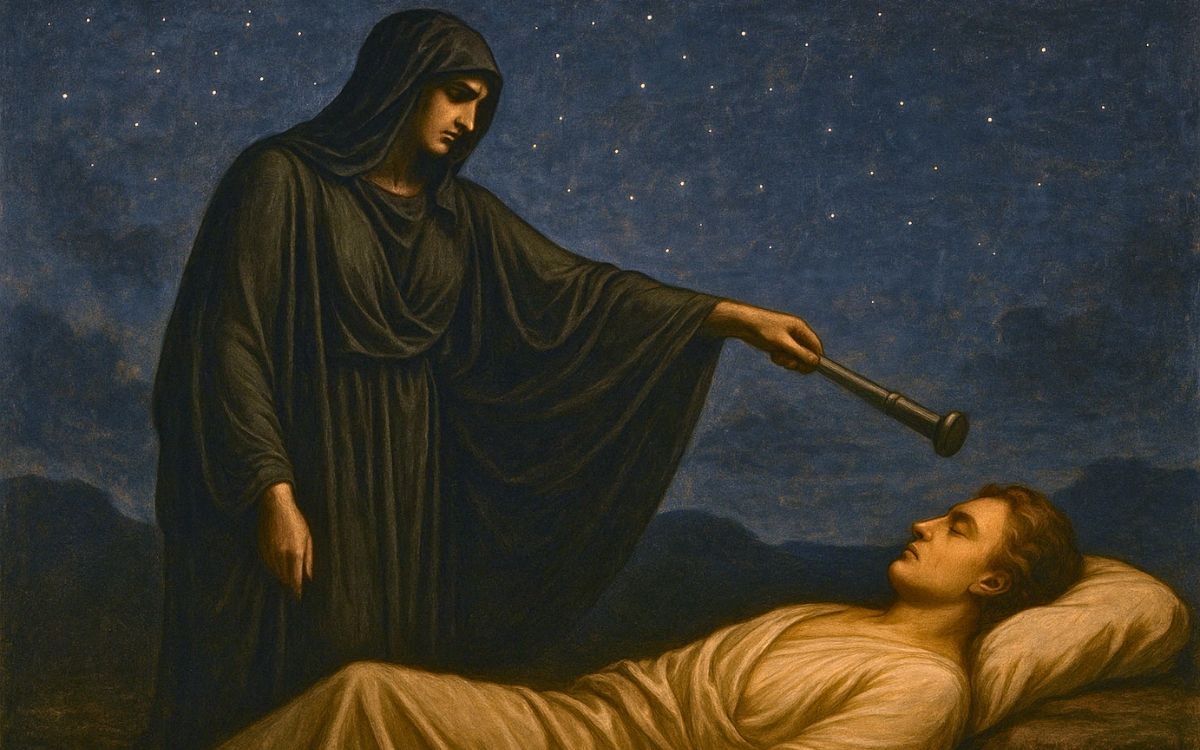Edward Young’s Night Thoughts is a sombre meditation on mortality that reveres both life and death as intertwined forces, writes WILLIAM BOVE
Night, sable goddess! from her ebon throne,
In rayless majesty, now stretches forth
Her leaden sceptre o’er a slumbering world.
Silence, how dead! And darkness, how profound!
Nor eye nor listening ear an object finds;
Creation sleeps.
In the darkness of the night, man is a helpless creature:
How poor, how rich, how abject, how august,
How complicate, how wonderful is man!
Under these circumstances, the only consoling force is religion.
Our third Graveyard Poet, Edward Young, cloaks both himself and the reader in an all-consuming gloom. He spreads it over us like an ever-expanding shadow, creeping silently across everything in its path.
Young does not temper his message. He even spaces his lines intentionally, inviting us to linger on each thought and feel the dread he evokes.
Born in 1683 and living until 1765, Edward Young uses the theme of mortality as a vehicle for moral reflection. Through his poetic meditation, we are reminded that death is inescapable and that dread is an inevitable companion to the knowledge of our own impermanence.
Unlike Robert Blair, Young does not approach death with a light hand or a trace of humour. There is no dark comedy here, no gentle mockery to make us more comfortable. His Night Thoughts does not treat death as a whimsical visitor.
Death, for Young, is neither a guest nor a jester. It is an omnipresent force, silent and unseen, moving without haste or remorse.
In the opening lines, Young describes this force with chilling beauty and solemn majesty:
Night, sable goddess! from her ebon throne,
In rayless majesty, now stretches forth
Her leaden sceptre o’er a slumbering world.
As with many Graveyard Poets, death is not portrayed with hatred or revulsion. It is not an enemy to be recoiled from. Rather, there is reverence, even awe. Death is personified as a goddess—regal, silent, and enveloped in darkness.
She is beautiful in her stillness. The night sky becomes her cloak, and the stars, her adornment. There is grace in her rule, and dignity in her silence.
“Stretches forth her leaden sceptre over a slumbering world”—a poetic image of death moving gently across the world as we sleep. She does not intrude. She does not disrupt our rest. And yet, she rules.
Slumber, in itself, is symbolic of death. We live our lives, but we are not beyond the reach of nature. Nature will, in time, come to reclaim us.
And when that time comes—unknown to us—we can only hope we are taken in our sleep.
Silence, how dead! And darkness, how profound!
Nor eye nor listening ear an object finds;
Creation sleeps.
Death, as Young describes, arrives without noise or fanfare. There are no cymbals crashing, no grand musical movement. Darkness and silence pair with death to create a weight that lingers long after the words are read.

We are reminded of the value of life in its most fleeting form. The silence of death, especially when it touches someone we love, feels like a complete and final emptiness.
But death, like the pouring of water from a glass, is not simply about what is lost—it is about what may come next. Though the vessel is emptied, something new may take its place.
The loss feels overwhelming, especially in the moment. But the memory, the love, the essence of what was important remains.
This too is Young’s message. We cannot see death coming. We cannot hear it. And in the line “creation sleeps”, we are told that all life, all motion, all awareness, has momentarily ceased.
In the darkness of the night, man is a helpless creature:
How poor, how rich, how abject, how august,
How complicate, how wonderful is man!
Here, man is laid bare—contradictory, flawed, brilliant. All aspects of the human condition are acknowledged, even celebrated, just before death takes him.
Young’s reverence extends to life as well as death. He presents both not as separate, but as two equal and interconnected forces.
He reminds us that the value of life is only fully understood when set against the mystery of death. And within this connection lies a fragile, beautiful truth – one that is simple, humble, and quietly profound.
Edward Young is an essential voice among the Graveyard Poets. His importance lies not only in his mastery of melancholy but in the way he helps us find meaning in gloom.
His entire poem can be seen as a eulogy. And Edward Young, its dignified orator.
Fun Fact: Night Thoughts was illustrated by William Blake in 1797, bringing Young’s sombre vision to life with equally haunting visual artistry.

What do you think of Edward Young’s vision of death in Night Thoughts? Share your thoughts in the comments section below!



